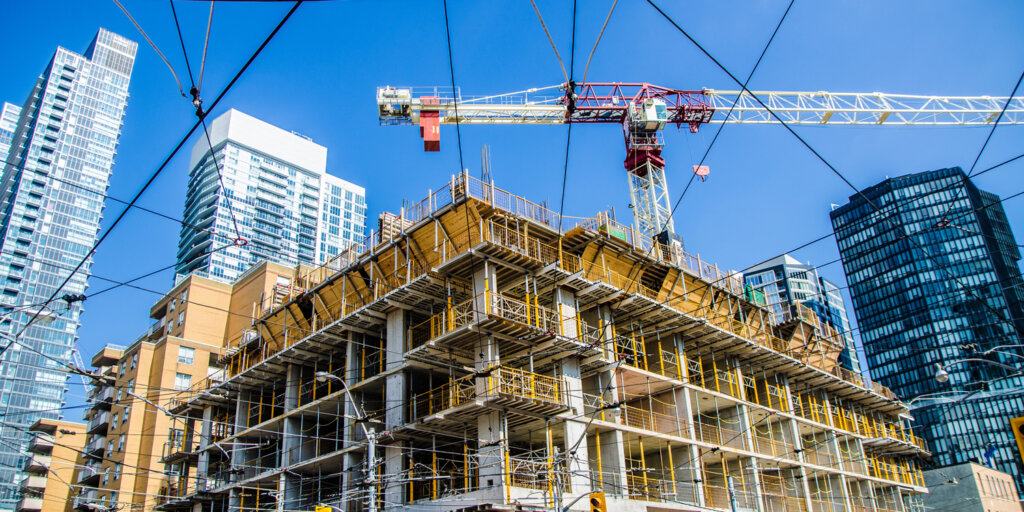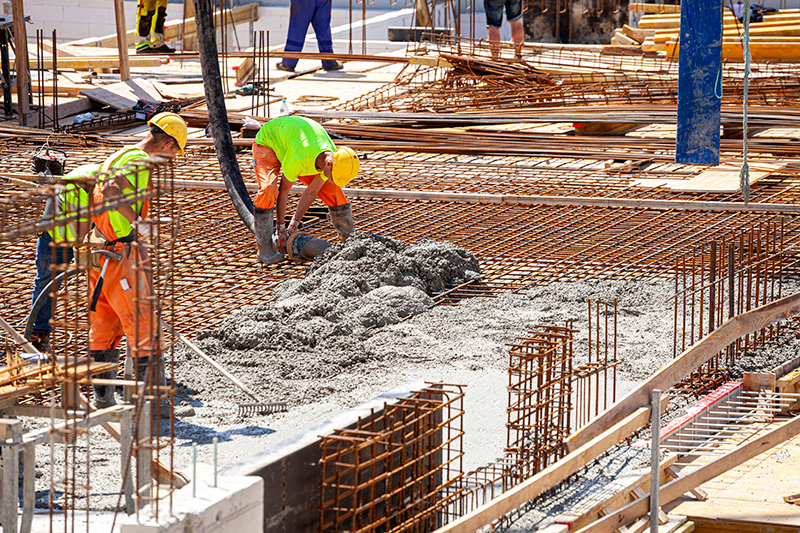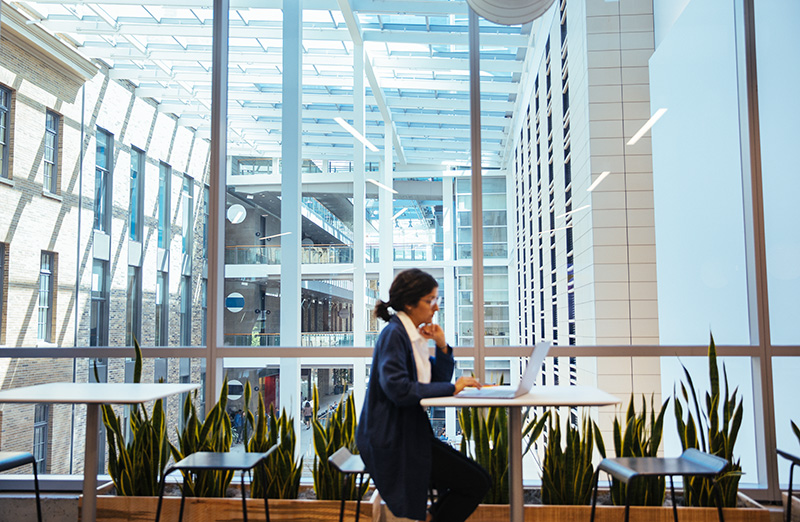Home » Building a sustainable future — from the ground up
Building a sustainable future — from the ground up

The newly launched Mission from MaRS: Better Buildings aims to help startups scale solutions to make our built environment more sustainable.
Wherever you are right now, chances are you’re in a place that’s among the top contributors to carbon emissions. The built environment — our houses, offices, shops, institutions and other structures — exacts a hefty toll on the planet. It starts at construction: Materials like steel, bricks and concrete are carbon-intensive to produce. Cement and concrete production alone generates 8 percent of all carbon dioxide emissions. And then there’s all the energy needed to run a building. According to the International Energy Agency, the buildings sector makes up almost a third of global energy consumption. It’s an especially big challenge in a country like Canada, where extreme temperatures require some level of indoor temperature regulation. In Toronto, buildings generate 58 percent of the city’s GHG emissions, with a majority of it being spent on heating and hot water.
And those emissions are only set to rise in the coming years with the expected uptick in construction: To meet the demands of a growing population, the country needs to build 3.5 million more units by 2030. Finding ways to curb emissions both in existing buildings as well as new ones will be critical to reach Canada’s goal of reducing carbon emissions by 40 to 45 percent by 2030, and reaching net zero emissions by 2050.
“We can’t waste time — the sooner we get developers building with clean materials and processes, the faster we’ll be able to reduce the footprint of our building stock,” says Tyler Hamilton, MaRS’ senior director of climate. “In places like Ontario and Toronto, it’s even more pressing: Buildings are huge consumers of fossil fuels and natural gas has such a foothold in the province. We need ways of using less of it and ways to avoid using it completely.”
Enter Mission from MaRS: Better Buildings, which aims to help startups scale solutions that will make our built environment more sustainable. This new initiative is convening key industry stakeholders — ventures, government groups, property management companies and builders — to help accelerate the growth of promising building-tech startups and the adoption of their technology.
“It’s designed to bring together different perspectives and needs in the marketplace,” says Hamilton. The Mission from MaRS team is issuing an open call for solutions that address the needs of stakeholders; the aim is that selected ventures will be able to run pilot programs with these stakeholders. That way, Hamilton says, startups can demonstrate what they’re capable of and building owners, managers and developers get solutions to decarbonize their buildings.
“Innovation without adoption is a dead end,” says Hamilton. “At the end of the day, a customer is better than an investor.”

Tackling the barriers to change
One of the biggest challenges for decarbonizing buildings is the embodied carbon, or the carbon dioxide that’s created in the production of the structure’s materials. While there are new solutions that can help lower those emissions, “the building industry is risk averse — by necessity,” says Ria Perrault, the Better Building lead. After all, buildings are meant to last for decades, and need to be safe and comfortable. “There aren’t a lot of materials that have a track record quite like concrete — but it’s really carbon intensive to make,” she says, adding that builders need to be incentivized to adopt more sustainable alternatives.
Then, once construction is completed, a building needs energy to run. Heating, cooling, lighting and all of the power that’s used to keep a building humming contributes to a structure’s overall carbon emissions. To lower these emissions, builders and homeowners need to retrofit existing buildings and ensure that new ones have energy-efficient technology.
And then there’s the trouble of not knowing how the electricity is generated. Building operators and owners “aren’t in control of the carbon mix in the electricity system,” Hamilton says. “So, if we’re using more gas on the electricity system, that increases emissions when buildings go electric.” There is growing interest in such solutions as geothermal, smart monitoring platforms and energy storage to help shift away from fossil fuels.
Affordability, however, is often a key issue for developers and building managers, says Luke Gilgan, a board director at the Peter Gilgan Foundation, which is partnering with MaRS on the project. (The mission is being supported through funding from the foundation — its biggest philanthropic contribution to date.) “We cannot achieve sustainability at the expense of affordability,” says Gilgan. “They need to be done in tandem.”
That’s something the Better Buildings initiative is aiming to address. “Helping early-stage ventures find their first customers gives them an edge,” says Hamilton. By facilitating pilot projects and commercial deployments, finding clients and supporting commercialization of promising solutions, the goal is to help these ventures reach economies of scale. Down the line, more affordable and reputable solutions will lead to wider adoption of innovative sustainable technology in buildings — a net positive for curbing the built environment’s footprint.

No two buildings are alike
The sheer number of types of buildings — everything from old warehouses to newly constructed condos — mean that there’s no one-size-fits-all solution. When retrofitting existing buildings, a “snowflake approach” is often taken: Each building is different and requires a custom mix of solutions to decarbonize.
Take the MaRS Centre for example — the complex is made up of both heritage buildings and newly-built modern structures with unique requirements. With more than 30,000 square feet of labs and research space, the MaRS Centre requires additional ventilation, which increases its energy consumption. Plus, all that fresh air then needs to be heated or cooled. “About 85 percent of the Centre’s carbon emissions comes from heating the winter air that’s coming in, so that’s where a lot of our energy-saving efforts have been focused,” explains Randal Froebelius, a project executive and senior advisor at MaRS Hubs and the former chair and chief elected officer at BOMA International.
To help optimize the building’s energy use, the MaRS Centre has installed a smart HVAC automation system. The building also uses technology from Airgenuity, which has sensors in the exhaust air stream that detects if there’s anything harmful in the air and automatically adjusts how much air is vented out of a lab environment, cutting down energy use and emissions. There are plans in the works to install a large battery array from Toronto venture Peak Power, which was in the initial Mission from MaRS: Climate Challenge. Its energy storage system will allow the Centre to take the load off the grid during the summer. The MaRS Centre is also aiming to be the site of one of the pilot projects with the Better Buildings initiative. “When innovators and building operators can link up to work toward a shared goal of reducing carbon, it’s a win-win,” says Froebelius.
And, with the clock ticking as the climate crisis worsens, time is of the essence. “We are in a climate emergency, we’re already seeing the impact of climate change — there’s no denying it,” says Perrault. “It’s important to leverage the smart ideas that people have to benefit society and to create spaces that are healthier, happier and more sustainable.”
Want to learn more about what it will take to build a sustainable and prosperous planet? Visit Mission from MaRS: Better Buildings.
The Better Buildings initiative is made possible by the Peter Gilgan Foundation. The initiative is also supported by RBC Foundation and donors to the Mission from MaRS Leadership Fund.
Image source: iStock
MaRS Discovery District
https://www.marsdd.com/
MaRS is the world's largest urban innovation hub in Toronto that supports startups in the health, cleantech, fintech, and enterprise sectors. When MaRS opened in 2005 this concept of urban innovation was an untested theory. Today, it’s reshaping cities around the world. MaRS has been at the forefront of a wave of change that extends from Melbourne to Amsterdam and runs through San Francisco, London, Medellín, Los Angeles, Paris and New York. These global cities are now striving to create what we have in Toronto: a dense innovation district that co-locates universities, startups, corporates and investors. In this increasingly competitive landscape, scale matters more than ever – the best talent is attracted to the brightest innovation hotspots.


